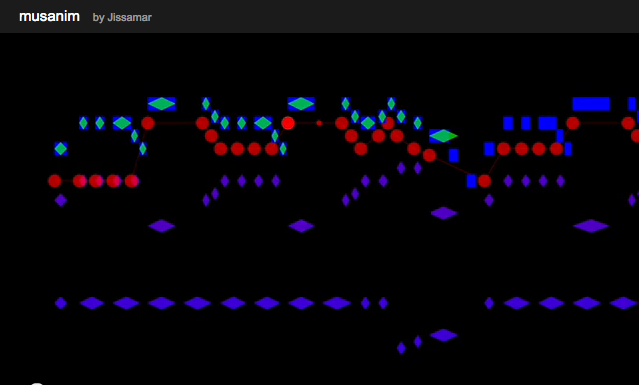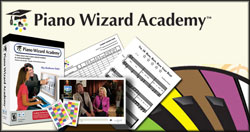My background is in music and linguistics, and I want your children to learn music more naturally and easily, like they learned their first language. Here are some simple music concepts and tools to share with your children.
For those of you who have little or no experience teaching or playing music, getting your kids started seems like a very daunting task better left to professionals. But kids will do nothing you say and everything you do, which is life's way of making us better people! So, we need to lead a little by example, and remember it is not the complexity of music, (language and math are complex and we do OK with them) it is the way we learn that is important.
1) Be the conductor of their musical world, as a tour guide first. Start with a simple song (A Simple Song by Sly and the Family Stone is one) and teach it to them in pieces, either singing, clapping or both. I sometimes pat out a song on my daughter's head or belly and ask her to guess what song it is. I choose classic riffs like Eine Kleine Nachtmusic by Mozart or Beethoven's fifth. I play guess what is playing in the car (I have control of the CD player, and confess I sometimes bribe them to get them started). If they ask me a question ("What does Baroque mean?") I look it up in Wikipedia and read it out loud (NOT while driving!). I am musically curious and lead by example.
2) I am interactive with them to dissect music into phrases and patterns. I don't CARE about conventional terms, I care that I am listening with a way to break it down and see how it comes together. I am not the "expert" I am the guide on the trail that points out the birds in the forest, and gets the to notice and chime in too.
What kinds of patterns am I speaking of? Phrases, repeated and varied upon mostly.
For example, Vivaldi's Four Seasons, "Spring" which is rendered in a visual style by the great Musanim.com website.
This is based on a very universal musical trait of pattern creation (expectation) then variation. Almost all music uses this in some way. Vivaldi is great because even on his repetitions he uses subtle orchestral variations in the arrangements so they are not EXACT repetitions but close enough in melodic shape to be recognized by the ear, but with more "flavor".
Watch the youtube and look for repeating patterns that then deviate or vary, and you will see one of the fundamental principles of music.
Below I will use silly sounds not to emulate the actual music but to show patterns. Feel free to sing along with your own nonsense syllables to get the point.
First verse (5 sec mark)
Bada bum bum bum bada ba (A)
Second verse repeats (8 sec mark)
Bada bum bum bum bada ba (A with small variations)
Then the third varies from that pattern and expectation (10 sec mark)
Bada bum bada bum bum bum bada bum . . .(B)
Then the whole three phrases repeat! (A at 11, repeat A at 14 sec, and B at 17 sec)
(Go start it again and listen to the first bars on YouTube)
So, AAB then AAB, then, guess what, variation (18 sec mark) from the larger pattern of the combined phrases, but with its own internal repititions as well, CCD, CCD, and so on. So Vivaldi did it on a micro level and a macro level. Patterns, and patterns within patterns create expectations, which are then violated or varied from, then the original pattern is returned to later (perhaps still changed, but recognizable) for release and return "home", i.e., the familiar.
Once you start listening to this kind of pattern creation and variation in music, you will find it is EVERYWHERE, and one of the primary engines of music. The art of it makes all the difference. Think of "99 bottles of beer on the wall" and how it is A, a higher A, B and B and then C, then repeats 99 times until you want to shoot some little campers. This is LOW art but easy to learn, hence we teach it to children and drunks. Yet for some reason, pattern creation and variation is like chewing gum for the ears, but we need new sticks (patterns) to keep the gum fresh or it gets stale.
And that kind of AAB pattern is one of the hidden keys to musical enjoyment, because there are endless variations on that. (I think the group ABBA named themselves for a popular song format of First verse, variation, repeat variation and back to first verse) You can hear this and variations of it in all kinds of songs, Blues, Classical, Rock, Pop, percussion, it is everywhere if you start noticing, and it can become your building blocks to talk about virtually any music and notice its magic being built one phrase at a time.
3) This leads to one of the great universal musical principles to listen for, tension and release, the yin and yang engine of all music.
That might be done with dissonance (tension) and then harmony (release) or with tension being caused by expectation (create a pattern, like above) confusion (variation) and release being the return (repeat of an earlier phrase).
But it might be done by messing with your expectations as a style. Blues music has a universal 12 bar harmonic pattern, and it establishes the base harmony, then shifts to a new harmony, (tension) shifts again (more tension) and returns to the base key. It is a wheel of theme and variations, tension and release and that is how it hooks and rehooks us, but each bluesman does it a bit differently or we tune out. Most ethnic rhythms are the same in creating a pattern and then surprising you with a variation, it could be orchestration, timbre, tempo, syncopation, harmonically, melodically, rhythmically, any and all that put a little different spice on that same old blues rice and beans. It might just be a nice balance of all those spices, and that moving equilibrium. Don't worry, analyzing music will not spoil your love of music, it will deepen your appreciation and understanding of the geniuses you listen to, whether it is Bach or Ray Charles, the Temptations or Alicia Keys, Professor Longhair (Look him up) or Libera.
Hope this was good food for thought, they are simple tools but so basic you will find these elements everywhere. It is tough to write about these things, but once you start to look for them, you will find them in virtually everything you listen to, and it will give you new appreciation and tools to talk about and create with with your children on this life long journey of music making and appreciation. Most importantly, go on a journey of co-discovery with your spouse, friends and children all bringing new tidbits to chew on and talk about.
We learn to speak as a child passively first, just listening and getting a vocabulary that we begin to understand, only later do we begin to piece those bits of sound together and "jam" (linguistically) with our parents. Deepen your musical vocabulary, not with jargon, but with patterns and observations you can share and explain. Have fun!




Good job on this Chris